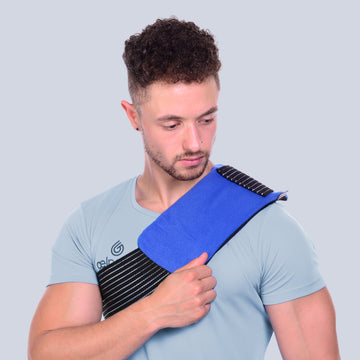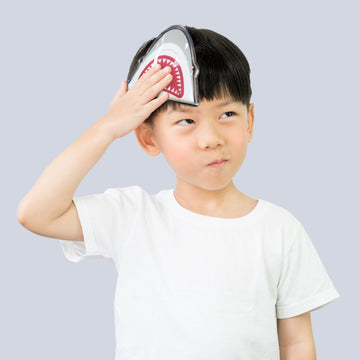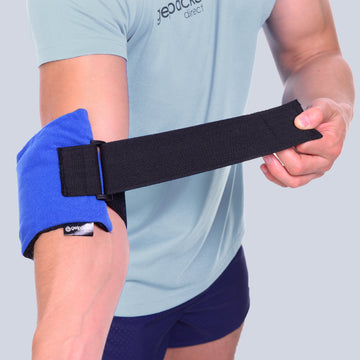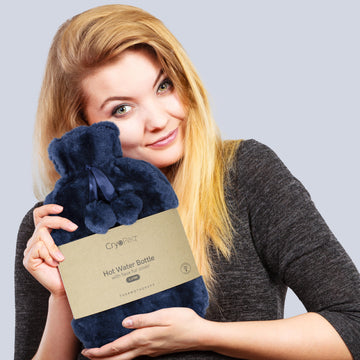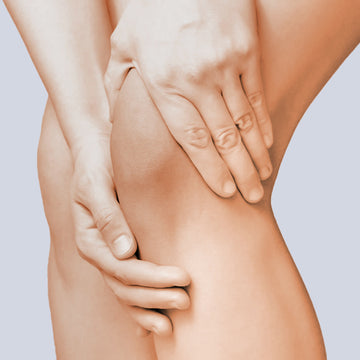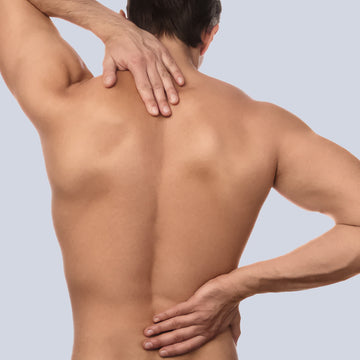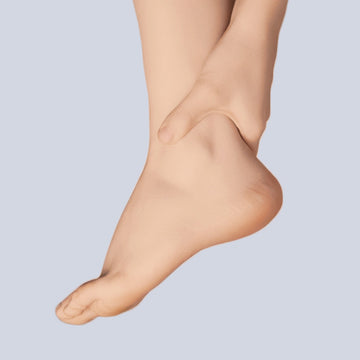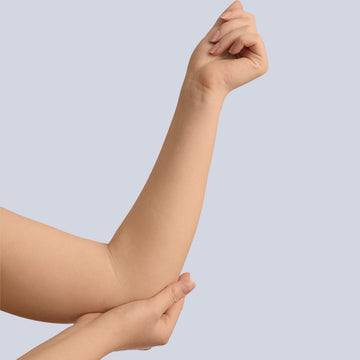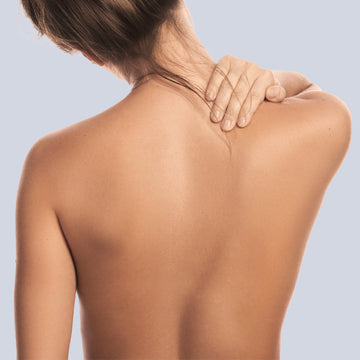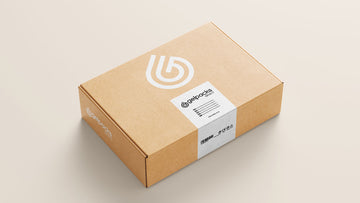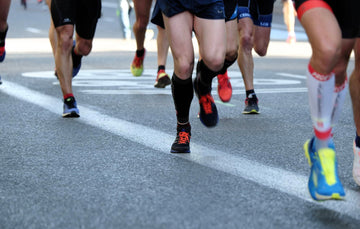Ice or Heat for Lower Back Pain?
Lower back pain is a widespread issue that nearly seven out of ten people will experience at some point in their lives. While some may be more prone to experiencing lower back pain than others, it is a condition that can impact anyone and can be caused by a variety of factors, including a sedentary lifestyle, strenuous physical activity, and trauma from accidents. Whilst over the counter and prescription pain medications can be effective at reducing pain, hot and cold therapies can also provide relief. But which one is the right choice for your lower back pain?
“Apply ice first for acute back pain then apply heat later once the inflammation has subsided. For subacute or chronic back pain then only use heat.”
We will explore the differences between hot and cold therapy and how they can be used to alleviate lower back pain. We will discuss the benefits of each treatment and when they may be most effective. By understanding the unique properties of hot and cold therapies, you can make an informed decision about which option is best for your specific situation. So, whether you're dealing with muscle spasms, soreness or other types of lower back pain, we hope this information will help you find the relief you need.
What lower back problems benefit from hot and cold therapy
One of the most effective and overlooked treatments for lower back pain is hot and cold therapy. These simple, inexpensive, and readily available treatments can be used on a variety of lower back issues. The following common conditions may benefit from heat or ice therapy:
Direct trauma
Lower back injuries can be caused by a variety of traumatic events, such as falls, car accidents, and sports injuries. If these injuries are not properly managed, they may increase the risk of experiencing chronic lower back pain. It is important to seek medical attention and follow proper treatment protocols to minimize the risk of long-term discomfort.
Pulled back muscle
Excessive stress and repetitive movements can lead to injuries in the muscles, tendons, and ligaments of the back. Some common activities that may cause or exacerbate back pain include lifting heavy objects, repetitive bending or twisting of the back, and even simple actions like sneezing or coughing. It is important to be mindful of these potential sources of back strain and take steps to avoid them to prevent injuries.
Post-workout back muscle soreness
Post-workout back muscle soreness is a common issue that can be caused by a variety of factors. One of the most common causes is trying a new exercise without adequately preparing the body for it. This can put undue strain on the muscles, leading to soreness and discomfort. Similarly, exercising without a proper warm-up period can also contribute to muscle soreness. This is because warm-ups help to gradually increase blood flow and loosen the muscles, reducing the risk of injury.
Arthritis
Arthritis is a condition that affects the joints, and one type that commonly impacts the lower back is osteoarthritis. This form of arthritis can cause inflammation and stiffness in the affected area, leading to pain, stiffness, and difficulty with movement. If left untreated, these symptoms can worsen over time.
Spondylolisthesis
Spondylolisthesis is a condition that affects the spine and can lead to lower back and leg pain. It occurs when the vertebrae in the spine become misaligned, resulting in the spinal cord and nerve roots becoming pinched. This can cause pain and discomfort in the affected area.
Structural spine problems
There are various structural problems that can cause severe lower back pain. Herniated or degenerative disk disease, for example, occurs when the discs that cushion the vertebrae become flattened with age. This can cause the discs to bulge and press on surrounding nerves, resulting in pain.
Spinal stenosis is another condition that can cause lower back pain. It occurs when the space around the spinal cord becomes narrowed, pinching the nerves.
Scoliosis, which is a curvature of the spine, can also lead to lower back pain, especially if left untreated. This condition is commonly diagnosed in adolescents and can cause stiffness and pain as it progresses.
IMPORTANT: Always use hot and cold therapy intermittently for 20-30 minutes at a time with a 1-hour break in between to avoid skin and nerve damage.
How to use heat and cold for different types of back pain
Different types of lower back pain may respond better to certain types of therapy. Here are some examples of lower back pain conditions and the therapy that is typically recommended for each.
1. Acute Back Pain: Use cold first and then apply heat later
If you are dealing with acute lower back pain (0 – 4 weeks) or pain that is the result of a direct injury, cold therapy is often the best choice. Cold therapy can help to reduce swelling, decrease inflammation, and provide a numbing effect by constricting the blood vessels and lowering the body's temperature. These effects can help to reduce pain and discomfort in the affected area.
See Ice Packs for Back Pain Relief
Once the inflammation has gone down, try using heat therapy to improve the flexibility of soft tissues, movement of muscles, and overall function of the back. The heat can stimulate blood flow in the lower back, bringing healing nutrients to the injured tissues.
It is also advised to continue using heat therapy intermittently for several hours or days to improve tissue healing and prevent recurrence of pain.
Read more: How to Apply Hot or Cold Therapy
2. Subacute or Chronic Back Pain: Continuous, low-level heat.
If you have subacute (4 – 12 weeks) or chronic back pain (more than a 12-week duration), apply heat therapy using a medium that provides constant warmth. For example,
- Keep a warming or heated blanket wrapped up around your lower back
- Use a commercial adhesive wrap that sticks to the lower back and provides several hours of low-level heat
When using continuous low-level heat, make sure to follow the package instructions carefully to prevent skin damage. These approaches provide closed heat to the lower back, stimulating and encouraging healing.
3. Post-workout: Ice your back immediately
Muscle soreness and back pain can occur from extensive workouts, trying a new type of workout, or even just from long days on your feet. Soreness from these activities may start on the first day but typically continues to peak until the third day. This phenomenon is called delayed onset muscle soreness (DOMS) and can cause significant inflammation and pain in your back.
When you have back pain from exercise or exertion, use cold therapy immediately after the activity to reduce tissue damage, inflammation, and pain. After a 24-hour period, use heat therapy to encourage tissue healing.
Tips to combine hot and cold therapy
Combining hot and cold therapy is a great way to help manage your daily pain and easy any soreness. Here are a few tips to help you incorporate the use of hot and cold therapy into your daily activities:
- Use a heat pack first thing in the morning to warm up your muscles if you wake up with an aching or stiff back
- Apply an ice pack before bed if you have exercised or had a strenuous day
- Use heat therapy before sleeping and after waking up if you have chronic back pain
- Carry a couple of self-activating heat patches and instant ice packs in your bag or car to use while driving or at work
Alternating hot and cold therapy may be the most effective way to relieve pain. Cold therapy numbs the area and reduces inflammation, while heat therapy stimulates blood flow and promotes healing. For example, applying heat before physical activity can improve muscle performance and prevent injury, while applying cold after activity helps reduce inflammation and pain. Once the inflammation has subsided, heat therapy can improve flexibility and mobility. Some people find that this combination of heat and cold is the most effective way to relieve their pain.
Read more: Alternating hot and cold therapy (Contrast Therapy)
How to apply hot and cold therapy
Finding the most effective mode of therapy may require a process of trial and error. Here are some specific options for you to consider:
Heat pack options:
- For continuous low-level heat an adhesive heat patch is useful
- For moist heat use a moist hot towel, wheat bag or heat wrap
- For dry heat use a heat pack or a hot water bottle
- Electric warming blankets will also provide soothing warmth
- A hot bath/shower can also provide some relief
Pro Tip: To prevent burns, skin damage, it is advisable to use a protective barrier, such as a cloth, towel or cover/wrap, between your skin and the heat source when using heat therapy. Avoid laying directly on the heat source.
Cold pack options:
- A bag of frozen vegetables or ice-cubes wrapped in a towel
- Instant cold packs that activate on-demand can be bought from the store and are useful while you’re traveling or at work
- Reusable ice packs are a cost effective and less messy than using loose ice/frozen vegetables
Pro Tip: As with hot use, to prevent ice burns, frost bit and skin damage, it is advisable to use a protective barrier, like a fabric cover, between your skin and the ice pack when using cold therapy.
Read more: Heat Packs vs Ice Packs for Injuries
When to not use heat or cold for your lower back
It’s important to note that there are some lower back conditions that should not be treated with any form of heat or cold therapy; other back issues are only suitable for either hot therapy or cold therapy alone. See summary table below.
Can heat make back pain worse?
There are certain chronic conditions that you should avoid heat therapy on. Heat in these conditions may cause excessive burns, skin ulceration, and/or increased inflammation.
| When not to use heat for back pain | When not to use ice for back pain |
|
|
Summary
Hot therapy is often preferred over cold therapy for relieving lower back pain and taking oral pain medication while using these therapies may enhance the overall pain-relieving effect. In general, many people find that applying heat is more effective for their lower back pain.
